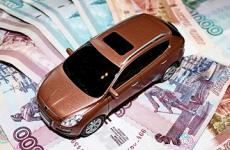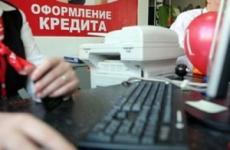Collection from vehicle owners in Belarus. Five reasons not to pay a toll
The story of Alexey is typical and absolutely not unique. There are thousands of such people in our country.
While they are hiding under the guise of anonymity, fearing problems at work, on the road. But these are not criminals. They are united only by the fact that they basically do not pay tolls. And each, in addition to the obvious financial, there are dozens of other reasons. Our interlocutor names among them implausible reports of officials, groundless traffic police stops. And the inspection itself, according to him, in reality has long since lost its main function - checking the safety of a technical condition. The state duty is growing, the bulk of the roads are not getting better, measures are tightening, and the number of anonymous defaulters continues to increase. A simple, one can say everyday story of one of them is in the material onliner.by.
Money distribution
“Officials convey their statistics through the media: how much they received, how much and what they spent. You don’t even need to get a calculator to understand: something does not fit, ”Alex began the conversation with simple calculations. Outside the window is a January day; his middle-aged Rover is abundantly covered with snow. Under the windshield, in the place where the sticker about the passed maintenance should be whitened, pristine clean. In the lower right corner of the windshield has been empty for a year and a half since the announcement of the collection of tax on roads. The young man recalls the loud statements made since then: “Tax officials said that the money from the duty ($ 100-120 million) will go to the fund for the construction and repair of roads. But, supposedly, these are trifles, they cover only one fifth of the expenses (total of $ 700 million). And if you count the number of all cars (including commercial ones) and multiply by the amount of payments, you get $ 500 million. It turns out that only every fifth passes MOT? And in the "State Technical Inspectorate" they say, violators are not 80 percent, but 16-20. Is someone lying? ”
The benefits of inspection
Inconsistency or inconsistency of information is a problem. But it was not she who became the main reason why Alexey stopped undergoing inspection. The impetus was rust, an ordinary hole on the body of his Rover in the area of \u200b\u200bthe rear arch.
“It does not affect the safety of traffic in any way, but I won’t pass it anymore, I’m deployed with the wording“ not allowed to drive on roads due to visible damage to the body ”- says the interlocutor. - Frankly, I'm a perfectionist. Every day I remember this hole, and every time it pisses me off. Otherwise, my Rover is fully operational: having noticed the slightest symptom, I immediately diagnose and solve the problem, that is, I observe traffic rules. I studied my car thoroughly, like other models of the brand. Now I administer the Minsk club Rover. By chance, corrosion came out during the introduction of the toll. And then rationality outweighed my perfectionism. He calculated: $ 750 should be given to repair holes and other rotting parts (with a two-year warranty), another $ 200 - for two years of tax. It is not economically feasible, spending should not exceed the benefit. Some, arriving at the TO station, pay for services only in order to find out about the shortcomings. Well, having received a diagnostic card in your hands, they leave without paying a tax, without receiving a cherished sticker. I think everyone understands that passing inspection does not guarantee the safety of the vehicle’s technical condition for a long time. Honestly, I would have believed otherwise. But the news about the fallen off wheels of tractors and trucks in the capital's streets leaves me no chance ”.
Penalties and Investments
The state duty for most passenger cars is 1.26 million, the fine is initially 210 thousand, then 420. That is, you can get caught three times, anonymous say. Here it’s so lucky: today you can drive past a patrol car, and tomorrow they will stop three times.
Advanced motorists keep the event factor to a minimum, which is helped by mobile applications or walkie-talkies. But no one is safe from an unexpected meeting. More than once stories surfaced on the network as traffic police officers, having listened to the principal arguments of the drivers regarding the state duty and, as a result, the lack of a certificate of passing the technical inspection, released the violators with the words “a happy journey”. In this matter, luck is not on the side of Alexei, he compensates for it by perseverance:
“I am often stopped, I don’t know why. He left without fines two or three times for the lack of maintenance. The last time the rod was indicated was to slow down at a crossroads in the private sector in the dark. The inspector got adequate. A dialogue like this took place: “Why did they stop? I was reinsured, driving 30 km / h. What is the reason?" - "Verification of documents". - “But this is not enough reason to stop ... (Later I will explain why I’m already using the annoying phrase“ reason for stopping. ”) I didn’t violate it, there is no special event, I’m unlikely to receive a statement from citizens, and I don’t think that you suspect me of something. ” For some time, we still calmly discussed the situation, and he finally admitted: “You know, in fact, there is no sensible reason to stop you. Drive. " Of course, this is an exception to the rule, more often inspectors begin to get annoyed, saying, they say, "got too smart." I answer: “Yes, I'm smart. Is it really bad? Can this not suit someone? ”
But before, he was inexperienced. In the first two years of driving experience, the traffic police stopped me up to five times a week. Record - three times a day. When I lived in another area, my route ran through the inspector's duty post and once a week I just showed documents. There were no fines, since traffic rules did not violate. But how do newcomers think? If they wave a rod, it means that somewhere they broke it. And as a result, you participate in an idle conversation on the topics “” “where are you going?”, “Why are you sneaking?” So the first impressions were formed: they stop just like that, they suspect “because”. I admit, baseless, "empty" requirements raised me the way I am. I began to read the laws, internal instructions of the State traffic inspectorate, and later - to use this knowledge in a conversation. From there, the phrase “reason for stopping”, and unwillingness to stop where it is prohibited by traffic rules, and contacting the trust service. My goal is not a dispute for the sake of "Pravdorubsky" video on the network. I just don’t want to be stopped for no objective reason. I do not create a conflict, I do not incite it and do not support it. I just want to understand what I did wrong, why I was stopped. When the inspector understands this, he suddenly becomes benevolent. But this never relieves me of the penalty for the lack of maintenance: as soon as we get to the transfer of documents, I immediately say that there is no inspection, I’m ready to pay on the spot.
Road condition
“The road tax was introduced, but the condition of the roads did not get better” - this statement accompanies almost every news on a sore topic. Someone does not want to take part in financing the construction of the second ring around Minsk, someone does not see the rapid development of repair organizations, continues to jump over the bumps and pits, which are used to since the beginning of the 2010s, he cautiously leaves the streets on snowy days . Alexey also has his own reason, and he is connected with the most serious accident for his experience. “In January 2010, they did not give way to me, and my first car - Ford Sierra - turned into scrap metal- recalls the young man. - Then it froze slightly. I left work, just turned and started to pick up speed. And after 200 meters there was a crossroads, where a couple of minutes before the accident, the roadway was sprinkled with sand. The same car, ending with the road, sprinkled beside the sidewalk. I only accelerated to 50 km / h, as I turned the car from the oncoming lane to the left. I hit the brakes and skidded to him. Fortunately, no one received the slightest injuries. Immediately the roadman ran up and asked: “Maybe you can still say that it’s slippery, that the road is poorly strewn?” In response, he only calmly said to him: “Since I did not stop for 20 meters, it is probably not very good.” Then he claimed that I “flew the devil knows how much”, that sand on ice had to act immediately. Later they invited me to analyze the accident, they did not apply sanctions to me. I do not know the fate of the offender. But my car was broken in the trash ".
Form of payment
Many anonymous people are willing to pay for their car and for the roads on which it drives, but not so. They are confused by several aspects. Firstly, all car owners must pay an equal tax: those who drive a lot and those who drive a little. Secondly, the duty is tied to a person, not to mileage: you have to pay every time you change a car. Thirdly, in their opinion, the gradation by weight is not quite fair: for a car weighing 1.49 tons, 3 basic quantities must be paid, and with a mass of 1.51 tons - 6 already.
“Duty for Belarus is not quite a tax- says Alexey. - We cannot help but pay the VAT included in the price of the goods, or income tax, which is deducted at the payroll stage. Our people are used to having someone else count their taxes. Duty in this sense is a puzzle. Those who, in principle, are willing to pay tax, are asked to include it in the cost of fuel. It is logical: you drive more - you affect the coverage more, its state - accordingly, you pay more. I don’t want to go into excise matters and double taxation, officials have already explained everything: fuel will not rise in price, since the price of it should be the same as in neighboring countries. But there are other ways of mandatory payments ".
In the meantime, such as Alexei continue to ride without a mark on technical inspection. Usually they tell the inspectors that they forgot the certificate at home. For this violation, the penalty is less - only 0.5 base amount. Recently, the Ministry of Internal Affairs offered not to fine the forgetful drivers, while ordering to improve the database, on which you can check everything, knowing only the name of the driver and the number of the car. That is, in particular, to automate the identification of state duty evaders. And here anonymous people will have a minimal alternative: either pay or take off their masks.
Two years ago, transport tax rose in Belarus. In the period 2014-2015 the base value, on the basis of which this type of collection is calculated, increased by 20%, i.e., from 150 thousand to 180 thousand. In this regard, many car owners have a logical question: will the road tax increase in Belarus in the new year 2016? Let's look at these indicators for various categories of citizens. It should be noted right away that from January 1, 2016, the base value required for calculating this type of tax has increased again and now amounts to 210 thousand Belarusian rubles.
For individuals
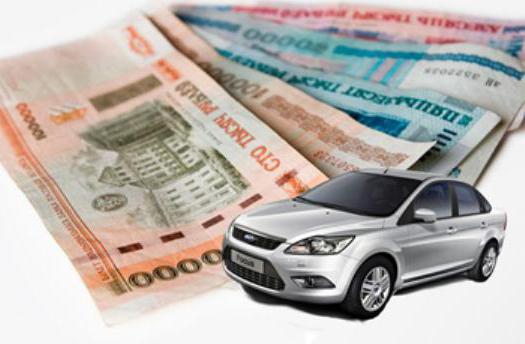 For equipment weighing no more than 750 kg, it will be only 2 basic values, and for trailers with a larger mass - as many as 11 values. The owners of the so-called caravan trailers received a slight relief this year. They will have to pay a fee of only 2 BV (before that there were 5).
For equipment weighing no more than 750 kg, it will be only 2 basic values, and for trailers with a larger mass - as many as 11 values. The owners of the so-called caravan trailers received a slight relief this year. They will have to pay a fee of only 2 BV (before that there were 5).
This difference in tariffs by civil servants is explained by the fact that trailers of a larger mass are most likely used not for private needs, but for doing business. Therefore, tax rates for them are quite high.
Apparently, for the same reasons, it was also established for bus owners. True, it all depends on the number of seats:
- ˂ 20 - 12 BV;
- 21-40 "pull" already 17 basic units;
- ˃ 40 - this is as many as 22 quantities (base).
It is most beneficial for individuals to ride a motorcycle on the country's roads. The road tax in Belarus for this type of transport will cost its owner only 2 base units per year.
For legal entities
Much worse in this matter to legal entities. For them, of course, the road tax rates in Belarus are much higher. So if you are the owner of an organization or enterprise, probably you should reconsider the need to maintain a large fleet of cars vehicle.
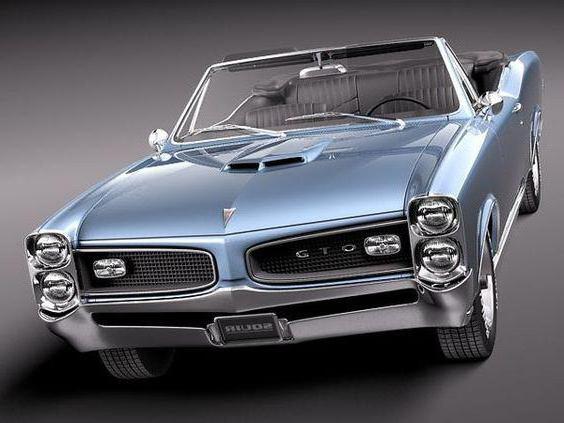 A car, depending on the mass, will cost the company the following amounts:
A car, depending on the mass, will cost the company the following amounts:
- ˂ 1 ton - will require parting with 7 BV;
- from 1 to 2 tons - will cost 9 base units;
- 2-3 tons - the tax will be 11 BV;
- for a car weighing ˃ 3 tons, 14 BV of road tax will have to be paid.
With trailers, too, everything is not so simple:
- up to 750 kg - 5 BV;
- over 7.5 tons - 12 BV;
- 5 basic units will have to be paid for a cottage on wheels (caravan trailer) (until 2016, this figure was 7 BV).
If your company has trucks, prepare the following amounts:
- ˂ 2.5 tons - 12 BV;
- 2.5-3.5 t - 17 quantities (base);
- from 3.5 to 12 tons - as many as 22 base quantities;
- for a mass of more than 12 tons will have to pay 25 BV.
And here is the bus fee for legal entities no different from private traders (individuals). It is likely that such tariffs are set because an individual who has a bus at his disposal is unlikely to drive it to the supermarket for groceries, but will use it for business purposes.
It is profitable to drive businessmen and motorcycles. It will cost only 3 base units. 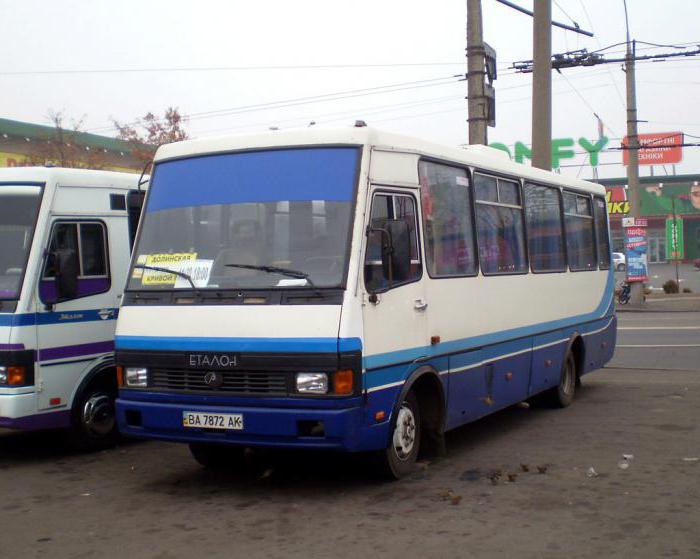
How to pay
Most often, the amount of road tax in Belarus is levied on car owners during the vehicle inspection. Depending on how old your car is and what category it belongs to, road tax can be paid according to this scheme:
- once every 2 years;
- annually;
- twice a year.
Those motorists who are allowed to undergo vehicle inspection once every 2 years must pay a double toll.
Are there any benefits
Nevertheless, there are such categories of citizens, as well as vehicles for which the payment of road tax in Belarus is carried out at a reduced rate. True, there are not so many of them:
- medical care cars;
- transport of the Ministry of Internal Affairs, Ministry of Emergencies, the KGB, the Ministry of Defense and the State Border Committee;
- buses and trolleybuses (public transport).
It is important to note that starting from January 1, 2016, the 50% benefit previously set for retirees was canceled. Now, a discount of half the fee is given only to WWII veterans, and only if there is a medical document confirming the applicant's suitability for driving a vehicle (in other words, if the veteran was able to undergo a medical examination), while a completely different person can actually manage the vehicle.
For taxi
Unfortunately, for this type of vehicles, no exemptions also appeared. The size of the road tax in Belarus, according to the law, is paid by taxi drivers twice a year, because it is exactly how many times they must undergo inspection. Tax rates are determined based on the actual mass of the vehicle specified in the data sheet.
When money can be returned
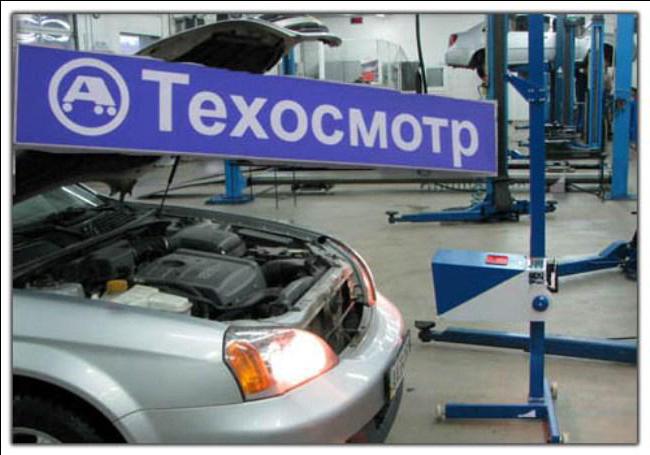 Sometimes, however, the road tax in Belarus can be returned. Such an action is regulated by article 259 of the Tax Code of the Republic of Belarus. Partial or full refund transport tax can be carried out if:
Sometimes, however, the road tax in Belarus can be returned. Such an action is regulated by article 259 of the Tax Code of the Republic of Belarus. Partial or full refund transport tax can be carried out if:
- state duty was paid in a larger than necessary amount or should not have been levied at all;
- the person who has paid the fee refuses to obtain the permit for the right to participate in traffic until applying to Beltekhosmotr;
- the car did not pass inspection, the owner was refused permission.
If you paid a toll for the whole year, and sold the car, for example, in April, a refund is not provided. Moreover, if, for example, in June of the same year you purchase a new car, you will have to pay the transport tax again.
Where the money will go
Officials traditionally explain the considerable cost of the road tax in Belarus by the fact that the money collected will go in full for the construction of new state roads, as well as for the repair of existing pavement. This is quite difficult to believe, because the highway and highways from Minsk to regional centers, as well as secondary roads have not been modernized for a long time. 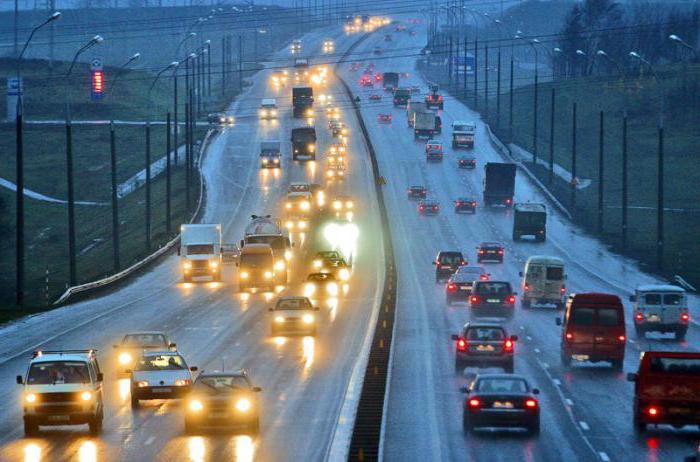
It is assumed that this year the road funds received from the collection of duties will be equally divided between the local and republican budgets. But so far these are only plans. Today, all the money received as a result of the collection of transport duties is accumulated in the republican budget. It is there that they decide which roads and when to repair. The manager of accumulated funds is the Ministry of Transport of the Republic of Belarus.
Despite the discontent of Belarusian motorists regarding the introduction of a new state duty “for allowing a vehicle to participate in traffic”, introduced on January 1, 2014 and which is being pushed forward at all levels, the position of the authorities remains unchanged.
Recall that the size of the fee will depend on the mass of the vehicle and the fee will be paid during the inspection.
For individuals, the state duty will be:
- with a mass of up to 1 t - 3 BV (390,000 rubles),
- from 1 t to 2 t - 5 BV (650,000 rubles),
- from 2 t to 3 t - 7 BV (910,000 rubles),
- over 3 tons - 10 basic units (1, 3 million rubles),
- trailer to a car - 1 BV (130,000 rubles).
For cars owned by legal entities, the state duty will be:
- up to 1 t - 5 BV (650 000 rubles),
- from 1 t to 2 t - 7 BV (910,000 rubles),
- from 2 t to 3 t - 9 BV (1, 17 million rubles),
- over 3 tons - 12 BV (1, 56 million rubles),
- trailer for a car - 3 BV (390,000 rubles).
For trucks, buses, motorcycles owned by individuals or legal entities, the duty will be:
- up to 3.5 t - 15 BV (1, 95 million rubles),
- from 3.5 t to 12 t - 20 BV (2.6 million rubles),
- over 12 t - 25 BV (3, 25 million rubles),
- trailer and semi-trailer to a truck - 10 BV (1, 3 million rubles),
- bus - 15 BV (1, 95 million rubles),
- motorcycle and scooter - 1 BV (130,000 rubles).
We hope that our argumentation below regarding dividing the second category of cars from 1 t to 2 t has been heard, therefore, see the new system for calculating the cost of the transport tax
According to the calculations, a budget of 1.6 trillion Belarusian rubles is laid down in the budget, which will be received as payment for the new state duty.
As Prime Minister of Belarus Mikhail Myasnikovich stated: “A new tax on cars is needed because all the money will go in a targeted way to the roads.” The head of government also named approximate amounts that Belarusian motorists will have to cross out of their own budget. For Lada, the tax will be 390 thousand Belarusian rubles per year, for Volkswagen 650 thousand Belarusian rubles per year, and Mercedes owners will pay up to 1 million bel. rub. in year.
However, according to the existing calculation methodology, almost 80% of vehicles registered on the territory fall into the second category of vehicles weighing from 1 to 2 tons individuals. So the owner of a small Volkswagen Polo car with an engine of 1.2 having a mass of 1067 kg will pay the transport tax as much as the owner of a Porsche Cayenne with an engine of 3.6 and a weight of 1995 kg. Based on even such considerations, it would be more logical to divide the most popular car segment into cars from 1 to 1.5 tons and from 1.5 to 2 tons, since Volkswagen Polo cannot exert the same “destructive” loads on the road surface, as and Porsche Cayenne or similar SUVs.
We also want to note that Belarusians are collecting signatures against the new state duty for motorists. The online petition to the Minister of Finance of Belarus Andrei Kharkovets currently has collected more than 60,000 signatures and continues to gain momentum. The Belarusian people are trying to draw the attention of the minister to the fact that the excise tax on fuel costs already includes the amount of deductions for road repairs, and also that the law equates those who rarely use the car with those who drive constantly. The petition also states that when a car is sold, a fee may be paid several times.
Also, the people once again asks to pay attention to how the funds are used to maintain roads. Users of automotive Internet resources constantly post a video that clearly shows how our road services lay asphalt in rain and snow, and with local repair of roads, asphalt is simply put in puddles and this is considered the norm.
Meanwhile, the finance minister himself told reporters that there is nothing innovative in the new law: “These are standard payments that are paid in other countries. Our fuel prices are lower than in those countries. ” The inclusion of a tax in the cost of fuel would lead to the fact that, due to the rise in price of gasoline, border regions would buy gasoline in Russia, the minister said.
He also said that in 2008 the tax on users of vehicles was canceled. “That tax was not replaced by rising fuel prices. These are all insinuations, there are clear calculations that we are ready to provide, ”the Kharkivtsi agency quotes.
Also recall that on new Year Increases in excise taxes on motor fuel and revenues from the new transportation tax are envisaged. According to the draft budget, the excise rate for car fuel in 2014 it will grow by an average of 14.5%.
For Belarusian motorists, there are several taxes and duties that are spent on different needs. What is the road fund made of? Has the quality of roads improved after the introduction of the transport tax? What will the drivers' money go for this year? The site was sorted out by the economist Vladimir Kovalkin, creator of the project “Costa Urada”.
Road fund
- The law “On Road Funds in the Republic of Belarus” was adopted on December 23, 1991, and was signed by Chairman of the Supreme Council Stanislav Shushkevich. Since then, the law has been repeatedly changed, but no one has repealed it. In many respects, the events that were decisive for the industry occurred in 2006: as a result of regular amendments to the law, taxes on the purchase and sale of automobile fuel were canceled. Excise taxes on fuel, by contrast, remained and at the same time increased 2.5 times. According to the 2006 budget, these excise taxes went to the revenue of the road fund.
For some time leapfrogging happened with excise taxes: in January 2007 their value was again reduced - by the same 2.5 times, and in March of the same year they were again increased - already by 2.4 times. Since 2008, fuel excise taxes no longer participate in the formation of road funds, but are sent directly to the republican budget.
It was assumed that this money from the road fund will be used to repair roads. Were there enough of them? In the 2010 budget, compared with the 2009 budget, expenditures on the road sector were halved. Head of the Road Maintenance Department, Belavtodor Department Alexander Golovnev said in an interview with 2010: “The repair volume has decreased by more than 100 times, and now we are actually eating up the accumulated funds. In 3-4 years we will receive a catastrophic condition of the road network. The amount of funding is such that, having completed a major overhaul of a certain area this year, next time we will do the same work in 150 years. ”
Over time, the title of the article in the budget has changed. So, if in 2014 Appendix No. 9 to the Law “On the Republican Budget” was called “Expenditures of the republican budget for financing the road sector”, then in 2015 the Appendix is \u200b\u200bcalled “Republican Road Fund”. Moreover, the road fund itself, of course, is included in the republican budget.
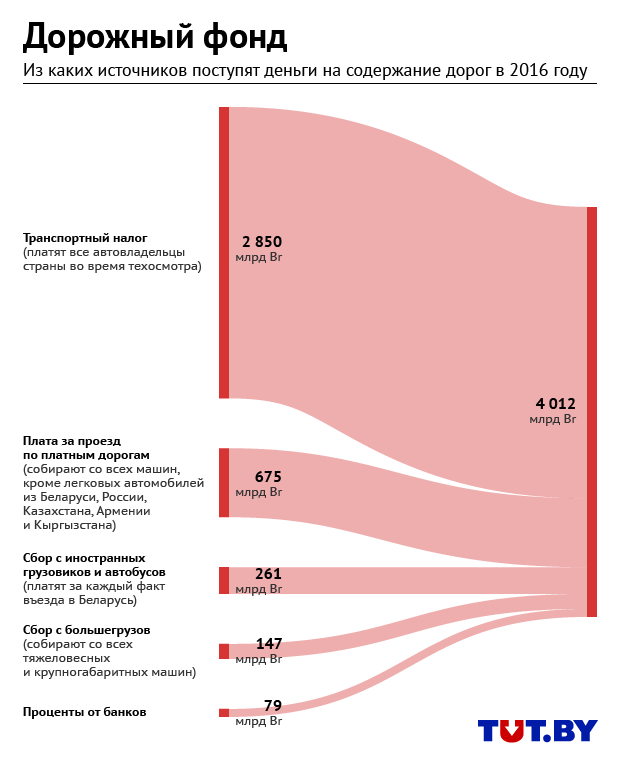
Total - 4.012 trillion rubles (or approximately 191 million dollars at the rate of mid-March). Costs are estimated at 5.412 trillion rubles (about $ 258 million), so part of the cost of the roads will be covered by other budget revenues.
Consider some of these points in more detail.
Transport tax
It is fully called the “state duty for issuing permission to allow a vehicle to participate in traffic”. This tax must be paid before passing inspection, and the maximum permissible mass of the car and its accessories. After a year, rates: 1-4 basic values \u200b\u200bwere added to the old ones. Now the private owner of Maybach, which is no longer produced, will pay 8 basic units for the year - today it is 1.68 million rubles. The owner of the Hummer will pay more: the maximum mass of the H2 model can reach 3.9 tons - and this is 11 basic ones.
Alexander Lukashenko shortly after the introduction of the tax: “If the money doesn’t go off the road, as stated, then you will remove the skin from both the government and the president that you didn’t control [...] I told the government: if only that money goes not on the road and then people will reproach me that we closed the holes, as some pee in newspapers and on Internet resources, blame yourself. ”
Deputy Finance Minister Dmitry Kiyko: “It must be emphasized once again that this is targeted money. Except for the reconstruction, modernization and capital construction of roads, they cannot be used. This focus is retained in the 2015 Budget Law. ”
The income from this tax was initially divided in a proportion of 50/50 between the republican and regional budgets, but since 2015 it has been going to the country's budget. True, at first they could not come up with how to distribute it. to divide depending on either the mileage of the roads, or on the number of cars. And since 2016, they decided to send money not only for construction and major repairs of roads, but also for current repairs.
Toll roads
The BelToll toll road system began operating on August 1, 2013, at first its work caused a lot of complaints. Over time, it turned out that the owners of large SUVs even with Belarusian numbers on toll roads. In the summer of 2015, they took effect in the fall, the length of paid plots by a quarter. BelToll currently serves 117 toll roads with a total length of 1,512 km. We thought about the Moscow Ring Road.
Cars with a maximum permissible total mass of not more than 3.5 tons, registered in the Customs Union, do not have to pay tolls. For the rest, a payment of between 0.04 and 0.145 euros per kilometer is provided, depending on the mass and number of axles. For example, a trucker on a three-axle tractor with a semitrailer will pay 88.4 euros (2.032 million rubles at the current rate) for traveling on the M1 from Poland to Russia. As can be seen from the budget, this year they plan to receive income of 675 billion rubles from toll roads. In terms of this, it is approximately 717 million kilometers for a foreign passenger car or 198 million kilometers for a trucker.
Collection from heavy trucks and foreign cars
The collection from heavy trucks was introduced in 2010 by presidential decree No. 613 "On the passage of heavy and (or) large vehicles on public roads." The fee is charged in order to compensate for damage to public roads from the passage of heavy and bulky vehicles on them. The fee may be charged by the enterprises of the Belarusian Road Engineering and Technology Center and the Transport Inspectorate of the Ministry of Transport. The size of the fee depends on the mass of the car, its size and the size of the protruding cargo, the tariff ranges from 0.02 to 1.3 euros per kilometer and can be combined (say, a very heavy and very heavy vehicle travels along public roads, while transporting cargo that goes beyond acceptable limits, etc.).
A fee from foreign cars for driving through the territory of Belarus is charged trucks and buses (with the exception of several categories), its value depends on the permissible total weight and ranges from 30 to 55 euros for each fact of entry into the country. The budget for this article provides income in the amount of 261.1 billion rubles - such money can be collected from approximately 360 thousand small buses or 200 thousand heavy trucks.
Other car taxes
There are other taxes and duties that motorists directly or indirectly pay, but they are not directly involved in the formation of road funds.
Since July 1, 2011, the rates for customs clearance of cars have changed, in some places the increase in tariffs was very impressive - several times. Now a customs clearance of 1 cubic centimeter of engine displacement will pull 1.5–20 euros. Become the cheapest passenger car in the world, Tata Nano 4–5 years of age will be cleared at the rate of 1.5 euros per “cube” - that is, payments will be pulled by almost a third of the cost of the machine itself (936 euros with a working volume of 624 cm 3). For almost two years - until December 31, 2015 - electric cars without customs clearance.
By the way, you also have to pay for the service of the customs clearance itself - now it’s already 50 euros.
Since March 1, 2014, a recycling fee for cars has also been introduced. It is paid by both legal entities (depending on the age and displacement of the engine) and individuals (depending on the age of the car) when importing a car into the country. The base rate for cars was set at 20 thousand Russian rubles, for trucks - 150 thousand Russian rubles. For cars under three years of age, 0.1 acted for individuals, for older cars - 0.15. Interestingly, it was necessary to pay for the import of electric vehicles, but not for the import of hybrids. Legislative casuistry has led to the fact that in some cases a vehicle was collected twice, for example, if the car was bought in Russia from an authorized dealer and then imported into Belarus.
But more recently, on February 4, 2016, utilization collection rates for legal entities were 1.65 times, and for individuals - as much as 8.25 times. At the same time, hybrids were added to the tariff table, and for convenience, instead of Russian rubles, they began to be considered in Belarusian. So, now for a car under the age of 3 years, an individual must pay 4.95 million rubles, for an older model - 7.425 million rubles.
However, the recycling fee and money for “customs clearance” do not go to the road fund - they go directly to the republican budget. The proceeds from the waste collection will go, as the Ministry of Industry said, “to create and develop the infrastructure of the waste disposal facility,” but there are no concrete plans yet. The excise tax on fuel - 1.676 million per ton of diesel fuel and 3.062 per ton of gasoline - also goes directly to the republican budget.

